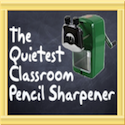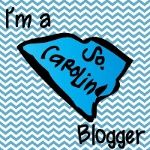We've just started our Geometry Unit. I heart geometry. It's one of those things that kids just get excited about. Shapes are everywhere! There are so many hands-on activities you can do with geometry.
One of the first things we do is learn the names of common polygons. That can be trickier than it sounds - pentagons, hexagons, octagons....oh my!
As a child, I was one of those nerds who came up with mnemonic devices to learn anything and everything. It just makes learning and retaining information so much easier! I mean, who doesn't still remember these....
ROY G BIV = Red, Orange, Yellow, Green, Blue, Indigo, Violet
Please Excuse My Dear Aunt Sally = Parentheses, Exponents, Multiplication, Division, Addition, Subtraction
In 1492, Columbus Sailed the Ocean Blue
I could go on, but you get the point! ;)
So, whenever my students need to learn something tricky, I try to come up with mnemonic devices for them. That's how this "Polygon Chant" was born.
A little more details about it....
Triangle Verse:
The first thing we do when starting Geometry is read The Greedy Triangle. That's where the "triangle on the hip" comes from in this verse. ;)
Quadrilateral Verse:
We talk about QUAD as meaning 4...my students know about twins, triplets, and someone usually knows quadruplets.
Pentagon Verse:
I stress that there are 5 fingers on a hand and we hold a PEN with our hand....therefore remember that a pentagon has 5 sides.
Hexagon Verse:
I tell students that HEXAGON has a letter in it that we don't see in a lot of words - X....siX also has this letter....therefore remember that a heXagon has siX sides!
Octagon Verse:
We talk about the prefix OCT as meaning 8. Where else have they seen this? Octopus which has 8 legs!
As I was preparing for my Geometry Unit, I realized that had NO geometry centers. Like none. Seriously. Out of all the center packs that I have in my classroom none of them included geometry centers. I am SO thankful I got the Geometric Masterpieces centers completed before starting this unit. My students are already eating them up! They love getting to use their "paintbrushes" (dry erase markers) to draw, divide, and shade shapes!
If you'd like to WIN this set of 10 Geometry Centers for your classroom, just leave a separate comment below for each of the following that you do:
1) Follow our shop on Facebook (Teacher's Clubhouse)
2) Follow our shop on TpT
3) Follow me on Instagram
Good luck friends!
28
One of the first things we do is learn the names of common polygons. That can be trickier than it sounds - pentagons, hexagons, octagons....oh my!
As a child, I was one of those nerds who came up with mnemonic devices to learn anything and everything. It just makes learning and retaining information so much easier! I mean, who doesn't still remember these....
ROY G BIV = Red, Orange, Yellow, Green, Blue, Indigo, Violet
Please Excuse My Dear Aunt Sally = Parentheses, Exponents, Multiplication, Division, Addition, Subtraction
In 1492, Columbus Sailed the Ocean Blue
I could go on, but you get the point! ;)
So, whenever my students need to learn something tricky, I try to come up with mnemonic devices for them. That's how this "Polygon Chant" was born.
A little more details about it....
Triangle Verse:
The first thing we do when starting Geometry is read The Greedy Triangle. That's where the "triangle on the hip" comes from in this verse. ;)
Quadrilateral Verse:
We talk about QUAD as meaning 4...my students know about twins, triplets, and someone usually knows quadruplets.
Pentagon Verse:
I stress that there are 5 fingers on a hand and we hold a PEN with our hand....therefore remember that a pentagon has 5 sides.
Hexagon Verse:
I tell students that HEXAGON has a letter in it that we don't see in a lot of words - X....siX also has this letter....therefore remember that a heXagon has siX sides!
Octagon Verse:
We talk about the prefix OCT as meaning 8. Where else have they seen this? Octopus which has 8 legs!
Here's a little video of my students singing it on Day 1...they caught on pretty quickly!
As I was preparing for my Geometry Unit, I realized that had NO geometry centers. Like none. Seriously. Out of all the center packs that I have in my classroom none of them included geometry centers. I am SO thankful I got the Geometric Masterpieces centers completed before starting this unit. My students are already eating them up! They love getting to use their "paintbrushes" (dry erase markers) to draw, divide, and shade shapes!
If you'd like to WIN this set of 10 Geometry Centers for your classroom, just leave a separate comment below for each of the following that you do:
1) Follow our shop on Facebook (Teacher's Clubhouse)
2) Follow our shop on TpT
3) Follow me on Instagram
Good luck friends!


















































